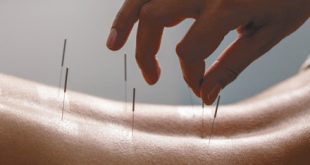By Teresa Sievers, MD, MSMS, FAARM –


Throughout history medical breakthroughs have had a dramatic impact on our health. But for every new thesis, there is always skepticism at first. For example, in 1860, many doctors didn’t believe Dr. Semmelweis’ theory that puerperal fever could be drastically reduced by hand washing; clearly he was proven to be correct. Likewise, Dr. Marshall’s and Dr. Warren’s theory that bacteria can cause peptic ulcers was rejected by the medical community, and yet they won the 2005 Nobel Peace Prize for this discovery. AARM has not been immune to similar lack of support. And although it is not widely embraced by the conventional medicine community, there are volumes of published data that support its value and effectiveness.
Unlike traditional medicine, which focuses on treating the effects of aging AARM aims to prevent the causes of aging. It focuses on why we age and how we prevent the illnesses. It’s not just about looking good. Looking younger is a great side-effect caused from taking care of your body from the inside, and that’s not a bad thing. While it’s often mistaken for integrative medicine, it is not. It is medicine.
People tend to look at their parents as an indicator of their health and longevity, but our genetic code has only a 5% impact on this. Instead, our health and longevity is based 95% on the lifestyle and diet we choose, which affects our genes. In fact, there’s actually no reason why we can’t live to 125 with full mental and physical function.
There are many theories of why we age and likely all play a role, including the effects of DNA damage, free radicals, telomere shortening, glucose accumulation, and of course, hormone imbalance. One of the reasons we age is simply because our hormones decline. For a woman, the decline happens during menopause and for a man, andropause.
Beginning as early as the late thirties, a woman in menopause experiences a 5-10 year period where estrogen, progesterone and testosterone begin to decline. The list of symptoms include mood changes, insomnia, hot flashes, fatigue, increased weight gain and loss of libido.
For men, their testosterone level slowly starts to decline over a 30 year period, usually beginning in their forties to fifties. Typical symptoms include decreased erections, reduced libido, loss of drive and competitive edge, and a tendency to be called a grumpy old man.
But for both men and women, these stages also represent an increase in incidences of fat deposition, diabetes, high cholesterol, heart attack, stroke, cancer and a long list of other life threatening diseases.
But balancing hormones to their optimal levels with hormone replacement therapy (HRT) can greatly reduce these outcomes.
There are two approaches to HRT, synthetic hormone replacement therapy (SHRT) and bioidentical hormone replacement therapy (BHRT). SHRT, as the name suggests, uses synthetic hormones. And although some of the synthetic hormones effects are similar to the body’s natural hormones, all are not. As a result, we can’t fully know the adverse effects they may have on our bodies. For women, one of the largest trials to date on SHRT, conducted by the Women’s Health Initiative in 2002, showed synthetic hormones increased risk of heart attack, stroke, blood clots and breast cancer.
On the other hand, BRT uses hormones that are chemically similar in structure as the body’s natural hormone structure, and therefore work more seamlessly with the body. Fournier et al study, published in the International Journal of Cancer in 2005 of 54K women who were taking BHRT estrogen and progesterone, showed a 10% reduction in the risk of breast cancer.
Just as women fear developing breast cancer from hormone use, men often have fears of prostate cancer from testosterone therapy. There are no studies showing that testosterone replacement therapy causes prostate cancer. In fact there are studies showing that prostate cancer and prostate enlargement may be prevented by testosterone therapy. Even men who have had prostate cancer can often safely receive therapy.
For the past 10 years, I have prescribed BHRT for men and women, not only for general well-being and potential reduction in the risk of age related diseases, but also for weight loss. As hormones become imbalanced there is an increase in body fat, particularly in the abdominal area, and a decrease in muscle mass. When hormones are used with a combination of healthy lifestyle and diet, a person receives the full benefits of hormones. Questions regarding hormone therapy will be addressed in our upcoming series of Step into the Spotlight.
For a full list of article references vistit www.teresasievers.com/news.
Teresa A. Sievers, MD
Restorative Health & Healing Center
10201 Arcos Av., Suite 201, Estero
Learn more about Dr. Sievers at:
www.rhhcenter.com
Karen R. Callan, CHC, AADP
Certified Health Coach
10201 Arcos Ave., Suite 201 Estero
239-405-9169
Learn More About BEST BODY NOW at:
www.lovemybestbodynow.com
 Southwest Florida's Health and Wellness Magazine Health and Wellness Articles
Southwest Florida's Health and Wellness Magazine Health and Wellness Articles

